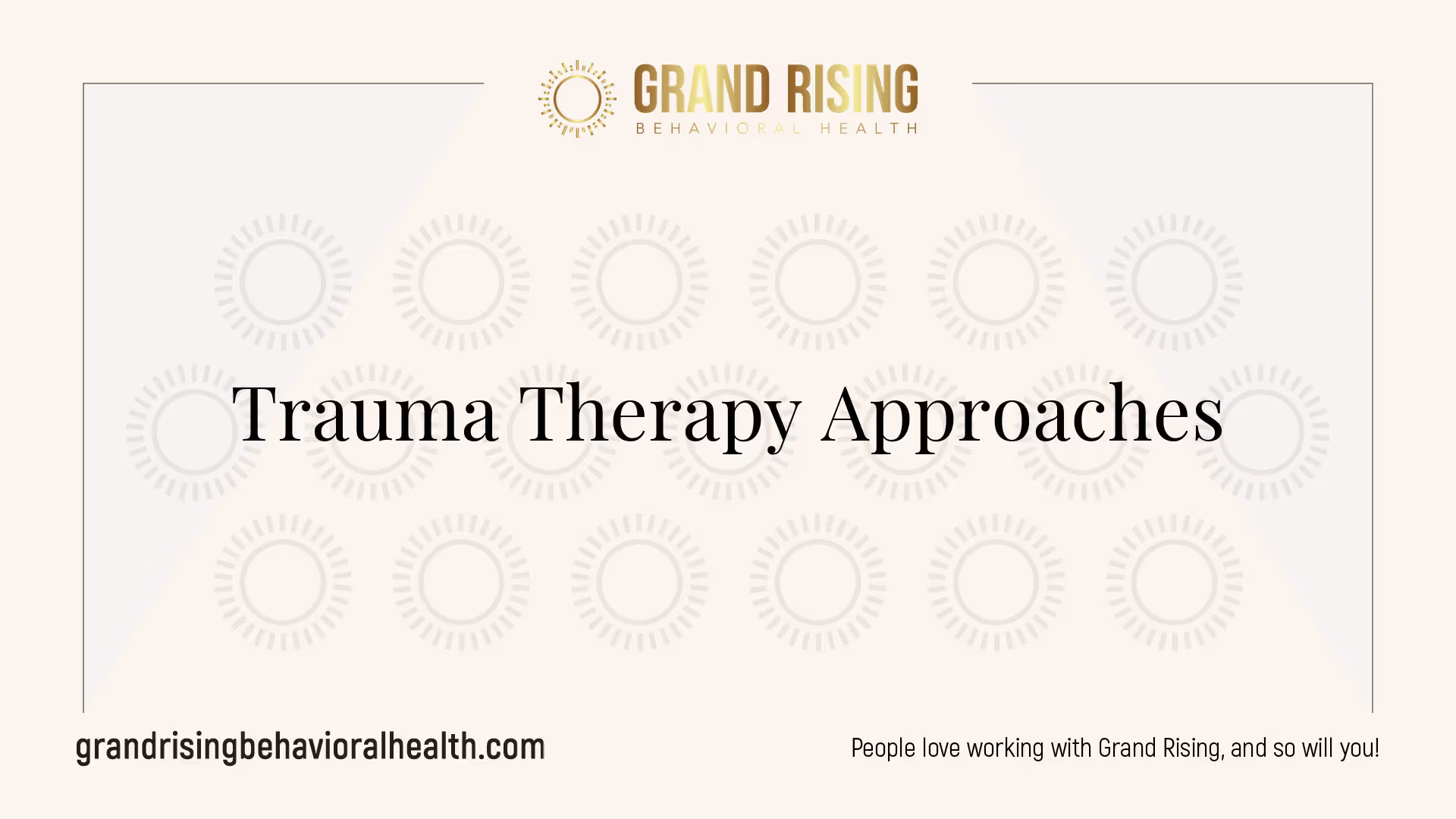Powering Through Rebuilding Trust After Trauma
Explore rebuilding trust after trauma with insights on therapy, safety, and managing PTSD for true healing.


Understanding Trauma Reactions
Trauma can significantly affect individuals in various ways, leading to a range of psychological and physical responses. Understanding these reactions is vital for effectively navigating the healing process.
Common Responses to Trauma
Individuals may exhibit several common responses to trauma, influenced by their experiences and emotional resilience. The following table outlines typical reactions:
Response TypeDescriptionHyperarousalIndividuals may feel "on guard," reacting strongly to sensory stimuli, such as sounds or sights.AvoidanceMany might distance themselves from reminders of the traumatic event, leading to avoidance of certain places or people.NumbnessSome may experience emotional numbness, feeling detached or unable to connect with others.DepressionSymptoms such as low energy, feelings of hopelessness, and disinterest in activities may emerge.
Recognizing these responses aids individuals in coping with their trauma.
Impact of Trauma on Mental Health
The effects of trauma extend beyond immediate emotional responses, resulting in potential long-term mental health challenges. Conditions such as Post-Traumatic Stress Disorder (PTSD) can develop, marked by symptoms including repeated thoughts about the traumatic event, avoidance, and persistent feelings of being on guard. Additionally, depression is a frequent outcome, which may manifest as:
Understanding the mental health ramifications of trauma is essential in the journey of rebuilding trust after trauma. Seeking help and engaging in therapeutic practices can significantly improve one's ability to cope and recover. Strategies like addressing self-blame in trauma survivors and utilizing mindfulness practices can also contribute positively to mental health.

Post-Traumatic Stress Disorder (PTSD)
Post-Traumatic Stress Disorder (PTSD) is a mental health condition that can occur after an individual experiences or witnesses a traumatic event. Understanding its symptoms and characteristics, along with effective management strategies, is crucial for rebuilding trust after trauma.
Symptoms and Characteristics
Individuals dealing with PTSD often exhibit a range of symptoms. Some common characteristics include:
SymptomDescriptionIntrusive MemoriesRepeated thoughts about the traumatic event.Avoidance BehaviorSteering clear of reminders or places that trigger memories.Negative Changes in MoodFeelings of numbness, hopelessness, or detachment from others.HyperarousalHeightened alertness or being "on guard" frequently.
These symptoms can lead to significant distress and impact daily activities. According to research, depression may also accompany PTSD, characterized by low energy, loss of interest in activities, and feelings of hopelessness [1].
Managing PTSD and Seeking Help
Recovering from PTSD can be an ongoing and gradual process. It's essential for individuals facing these stress reactions to seek support when they are ready. Support from family and friends can be invaluable during this time. If stress reactions significantly interfere with daily life, consulting a counselor or medical professional is advisable for effective treatment options [1].
Treatment for PTSD can involve several therapeutic approaches, such as Cognitive Processing Therapy (CPT). This method focuses on reevaluating thought patterns related to the traumatic event, helping patients to form healthier perspectives on their experiences [2]. Engaging with professionals who understand trauma can greatly assist in the healing journey, contributing positively to the process of rebuilding trust after trauma.
Those affected by PTSD may also benefit from practices that enhance emotional safety. Techniques such as mindfulness can help individuals regain control over their thoughts and reactions, further supporting their recovery [3].
Overall, managing PTSD is best approached through a combination of support networks and professional help, which together create a foundation for healing and rebuilding trust.

Rebuilding Trust After Trauma
Rebuilding trust after experiencing trauma is a critical component of the healing process. Trauma can considerably disrupt an individual’s sense of safety, often leading to a deep-seated fear of vulnerability and connection. As such, understanding the challenges involved in this process, as well as the importance of support systems, is vital.
Challenges in Rebuilding Trust
Recovering from trauma can create uncertainty and disrupt fundamental needs such as trust, safety, and control. Trauma survivors may encounter various challenges as they attempt to rebuild trust:
ChallengeDescriptionFear of VulnerabilitySurvivors may struggle to open up to others due to fear of being hurt again.Distrust of OthersIndividuals might generalize their trauma experiences, leading to mistrust toward friends, family, or even therapists.Emotional DysregulationA dysregulated stress response can cause unpredictable emotional reactions, making interactions difficult.Difficulty in Forming RelationshipsSurvivors may feel isolated, impacting their ability to forge new connections or maintain existing ones.
Understanding these challenges is essential for both survivors and those supporting them, as it helps to create an environment of empathy and patience.
Importance of Therapy and Support Networks
Effective support networks play a crucial role in the journey toward rebuilding trust. Connecting with trusted friends, family members, or support groups can foster a sense of safety and belonging. This emotional support and validation are vital for navigating the healing journey after trauma.
Therapy can also provide a structured environment to work through trust issues. Trauma-informed therapy focuses on establishing trust and transparency between the therapist and the individual. This relationship is crucial for helping survivors reclaim their strength and resilience. Important elements of trauma-informed therapy include:
ElementDescriptionPhysical and Emotional SafetyCreating a safe environment where individuals feel secure expressing themselves.Client AutonomyRespecting the preferences and rights of individuals in therapy to promote empowerment.Cultural SensitivityAcknowledging and respecting cultural differences that can influence the healing process.
Engaging in these supportive therapies and networks can help trauma survivors navigate the complexities of trust and relationship building, aiding them in achieving emotional regulation and moving toward healing. For more insights, learn about addressing trauma in relationships or explore navigating trauma-related guilt.

Creating Safety and Control
Creating a sense of safety and control is essential for individuals recovering from trauma. These elements not only aid in emotional healing but also play a crucial role in rebuilding trust after trauma.
Establishing Emotional Safety
Emotional safety is a foundational aspect of healing from trauma. It involves creating an environment where individuals feel secure enough to express their thoughts and feelings without fear of judgment or re-traumatization. In trauma-informed therapy, important considerations include establishing trust and transparency, ensuring physical and emotional safety, respecting client autonomy, and being aware of cultural differences [5].
Physical safety helps to address fear and anxiety, while emotional safety allows individuals to explore their trauma more openly [6]. For example, a safe therapeutic environment can aid individuals in developing emotional regulation skills, which are vital for processing traumatic experiences effectively.
Creating emotional safety may involve:
Regaining a Sense of Control
The trauma experience often disrupts fundamental needs, leaving individuals with feelings of uncertainty and loss of control [4]. Regaining a sense of control is a gradual process that can involve setting achievable goals, making choices, and taking proactive steps toward personal growth.
Feelings of empowerment and control can be restored through:
Engaging in self-expression, addressing self-blame, and navigating trauma-related guilt can also contribute to regaining control. Through these processes, individuals can gradually rebuild their confidence and improve their overall emotional well-being.
In summary, establishing emotional safety and regaining a sense of control form the bedrock of recovery from trauma. These elements empower individuals to reclaim their strength and resilience while working towards their healing journey.

Trauma Therapy Approaches
Therapy plays a crucial role in the process of rebuilding trust after trauma and managing trauma-related disorders. Two effective therapeutic approaches are Cognitive Behavioral Therapy (CBT) and Prolonged Exposure Therapy (PE).
Cognitive Behavioral Therapy (CBT)
Cognitive Behavioral Therapy is a structured, time-limited approach that focuses on recognizing and altering problematic thinking patterns. The fundamental belief behind CBT is that our thoughts influence our feelings and behaviors. By identifying these negative thought patterns, individuals can learn to change their behavior and emotional responses, ultimately helping to manage their symptoms more effectively.
CBT involves weekly appointments where individuals engage in discussions and exercises aimed at developing coping skills. Some common components of CBT include:
ComponentDescriptionCognitive RestructuringIdentifying and challenging irrational thoughts.Behavioral ActivationIncreasing engagement in enjoyable activities.Skills TrainingLearning new strategies to cope with anxiety and stress.
Prolonged Exposure Therapy (PE)
Prolonged Exposure Therapy is a specific form of Cognitive Behavioral Therapy that emphasizes behavioral techniques. In PE, individuals are gradually exposed to their trauma-related memories, emotions, thoughts, and physical sensations. This process allows individuals to confront their trauma reminders and diminish avoidance behaviors.
The core elements of Prolonged Exposure Therapy include:
ElementDescriptionImaginal ExposureReliving the trauma through detailed recounting in a safe environment.In Vivo ExposureGradually facing avoided situations that remind them of the trauma.Emotional ProcessingProcessing feelings related to the trauma to integrate them into their broader life narrative.
Both CBT and PE provide valuable frameworks for individuals looking to overcome the effects of trauma and are often utilized as part of a comprehensive approach to healing. For additional resources on trauma recovery, consider exploring topics such as the role of mindfulness in trauma healing or coping with hypervigilance in trauma survivors.

Cultural Considerations in Trauma Care
In the journey of rebuilding trust after trauma, it's essential to consider cultural factors in trauma care. Two significant approaches are Trauma-Informed Care (TIC) and the integration of Cultural Humility (CH). Both strategies focus on promoting healing and empowerment among individuals, particularly those from marginalised communities.
Trauma-Informed Care (TIC)
Trauma-Informed Care is a holistic approach to therapy that prioritizes understanding the root causes of distress. TIC shifts the perspective from simply asking, "What’s wrong with you?" to "What happened to you?". This method emphasizes the importance of a client's complete history—both past and present—to deliver effective therapeutic support.
Key principles of Trauma-Informed Care include:
These elements help support individuals as they reclaim their strength and resilience.
Cultural Humility (CH) Integration
Cultural Humility is the practice of acknowledging and respecting the diverse experiences that shape each individual. It encourages healthcare providers to be aware of their own biases and attitudes while being open to learning from the clients they serve. This approach is especially critical in supporting older adults from minoritized identities, who may face additional challenges due to systemic oppression and discrimination.
Integrating Cultural Humility into trauma care helps in the following ways:
By implementing both Trauma-Informed Care and Cultural Humility, therapists can create environments that promote dignity, respect, and empowerment for clients recovering from trauma. These culturally sensitive approaches are essential for effectively addressing the complex needs of trauma survivors, ultimately aiding them in their healing journey. For more information on healing practices, explore the role of mindfulness in trauma healing and other therapeutic interventions.
References
[2]:
[3]:
[4]:
[5]:
[6]:
[7]:
[8]:
More Resources
A team ready to start your journey.
Get in touch — today.
We are a safe space – a haven for exceptional individuals to receive discreet, personalized, in-person treatment and care.
.png)









